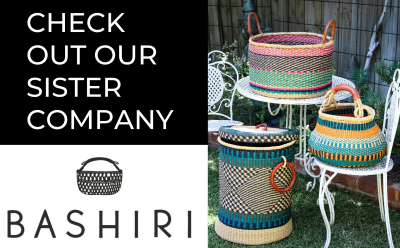
Feeling a little disconnected from both yourself and Mother Earth lately? Drumming has been proven to help people reconnect in very powerful ways. The beautiful Djembe dates back hundreds of years from West Africa, and the creation of these drums was a very spiritual process. It is said that the playing of these drums and creating a beat allows us to focus more internally. The beat helps our brains to slow down and reconnect with our own physical rhythm. It also helps us to tune into the rhythms of the earth and keeps us more grounded. Even playing the djembe with others can help us reconnect with our community and allow us to feel a stronger sense of belonging.
It is super easy for anyone to learn how to play the Djembe. Even a simple beat can have amazing effects on our health and wellbeing. Our drums are made with the utmost love and care, and the highest quality. They are all beautifully crafted, and when not being played make a great ornamental piece in your house.
Check out our range of Djembes now, and feel more connected to the rhythms of the universe!

Buying a new Djembe can be a daunting task. It is a big investment, both financially and towards developing your drumming skills. When it comes time to buy a djembe, there are a number of things to consider before you commit to your purchase!
A big part of what makes a good djembe simply depends on your style and preference. There are a lot of good djembes out there; it’s just a matter of finding one (or two, or three!) that suit you.
Here is a list of 5 things we recommend you consider when choosing your djembe:
- The height and weight of the drum: Make sure you choose a drum size that compliments your body proportions. Too big/small or too light/heavy will make your drum harder to play.
- Thickness of the skin: This will depend on your level of playing. Beginners usually prefer a thinner skin, while the more advanced will go for a thicker skin.
- Comfort of the bearing edge: A smooth playing surface is a must for your djembe. Look out for smoothness of the edge, and any divots, dips or cracks around the edges.
- Aesthetic: Looks do matter! You need to like how your djembe is designed aesthetically, your going to be looking at it a lot.
- Quality of the Timber and Carving: Pay attention to both the quality of the timber the djembe is made out of, and the carvings within the wood. This can give clues as to the quality of the product.
Not all djembes were created equal! There are a lot of low-quality drums out there, made quickly and carelessly for unsuspecting tourists. Playing one of these can be very discouraging, because they sound awful no matter how well you play. It is always best to get some advice from your teacher or a professional who can guide you to the right drum.
Finally, its all about the sound of your Djembe and the feeling you get when you play it. Don’t be afraid to give the drum a good play and see if it resonates with you. Remember too: “the drum will choose you”!

These beautiful cane jinglers are also called ‘Woso Woso’! You wouldn’t know by looking at it, but these gorgeously handcrafted instruments make the most delightful percussive sound when you shake it. The woso woso is a type of caxixi, similar to the kiss kass, and acts as a great shaker to cut through any ensemble. These shakers are traditionally played to accompany drummers, and they are great as accent percussion. African Drumming’s cane jinglers are hand woven from elephant reed in the Bolgatanga region of Northern Ghana, and are filled with small bells which produce a bright, pleasant jingling sound. This simple yet beautiful instrument is just another example of how our talented West African artists use elepant grass to weave a variety of sustainable products. The woso woso is a great shaker to inspire rhythm in the young, and definitely durable enough for a young muso too!
Available now in the shop or online. Get yours here.

We are dedicated to giving back to our planet and ensuring our ventures are eco-friendly and sustainable.
Our joint venture with Ghanaian NGO Denyigba sees the reforestation of hardwood mahogany: every time we sell an African drum, we plant and nurture a new hardwood tree to replace the wood used to build our djembes.
The number of saplings nurtured has now reached over 5000, with a further 5000 seeds purchased 💚
Learn more about our sustainability initiatives here
And follow Denyigba on Facebook here
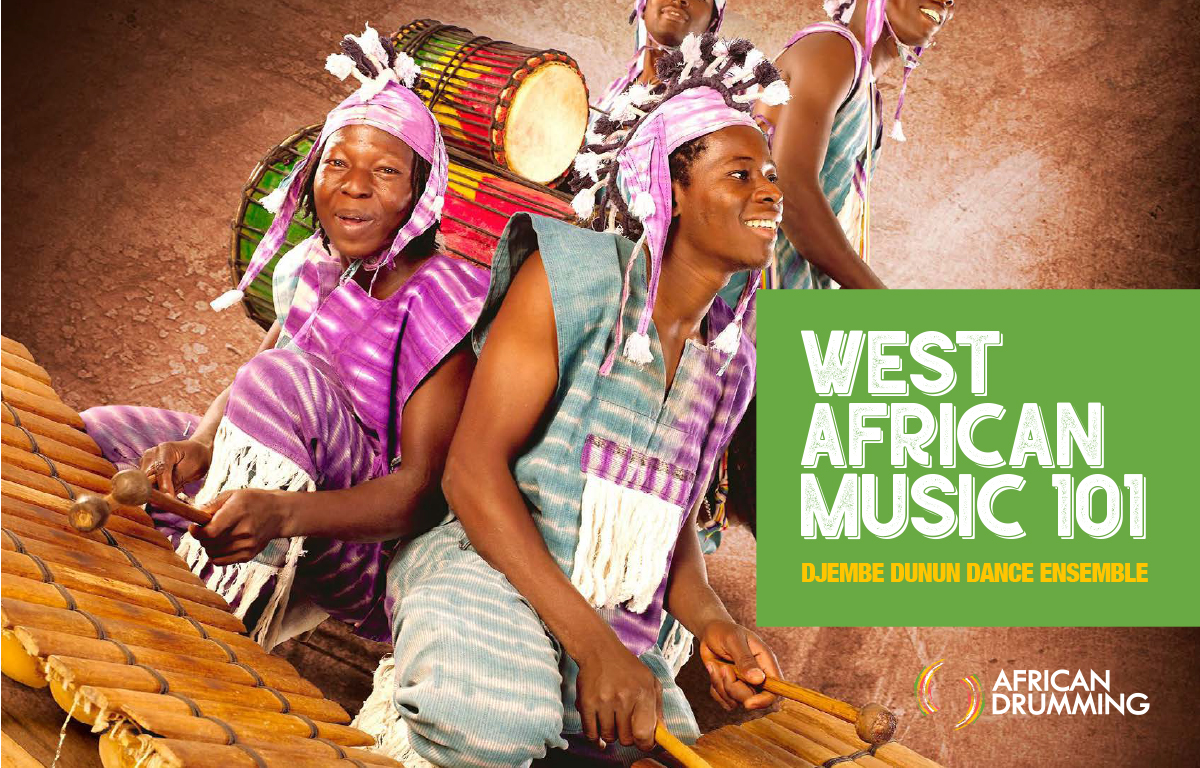
Our favourite handbook has received a little re-vamp, offering insights, resources, tips and tricks. This 101 guide is your introduction to the world of West African music. Learn about the history, the drums and the ensemble.
Get your copy here
Do you love West African bolga baskets as much as we do? Check out our sister company Bashiri African Imports: bringing you the most gorgeous handmade designs from Ghana. Each basket is unique, handwoven from sustainable elephant grass by our amazing artists.
We have a wide variety of beautiful baskets available including:
Round baskets
Pot baskets
Oval baskets
Bicycle baskets
Baby baskets
Laundry baskets
View the Bashiri online shop here
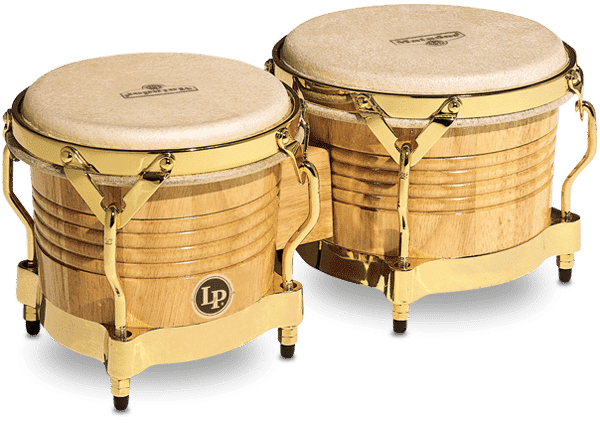
Introducing our brand new LP Matador series bongos. Ideal for musicians looking for traditional styling and professional-quality sound at an affordable price. These Wood Bongos feature Siam Oak shells, rawhide heads and traditional rims. Available in almond and gold.
Includes:
Siam Oak shells
7-1/4″ and 8-5/8″ natural rawhide heads
Traditional rims
Matching conga set available
5/16″ diameter tuning lugs, steel backing plate and plated cast aluminum bottoms
Matching congas available
Tuning wrench included
Check them out here
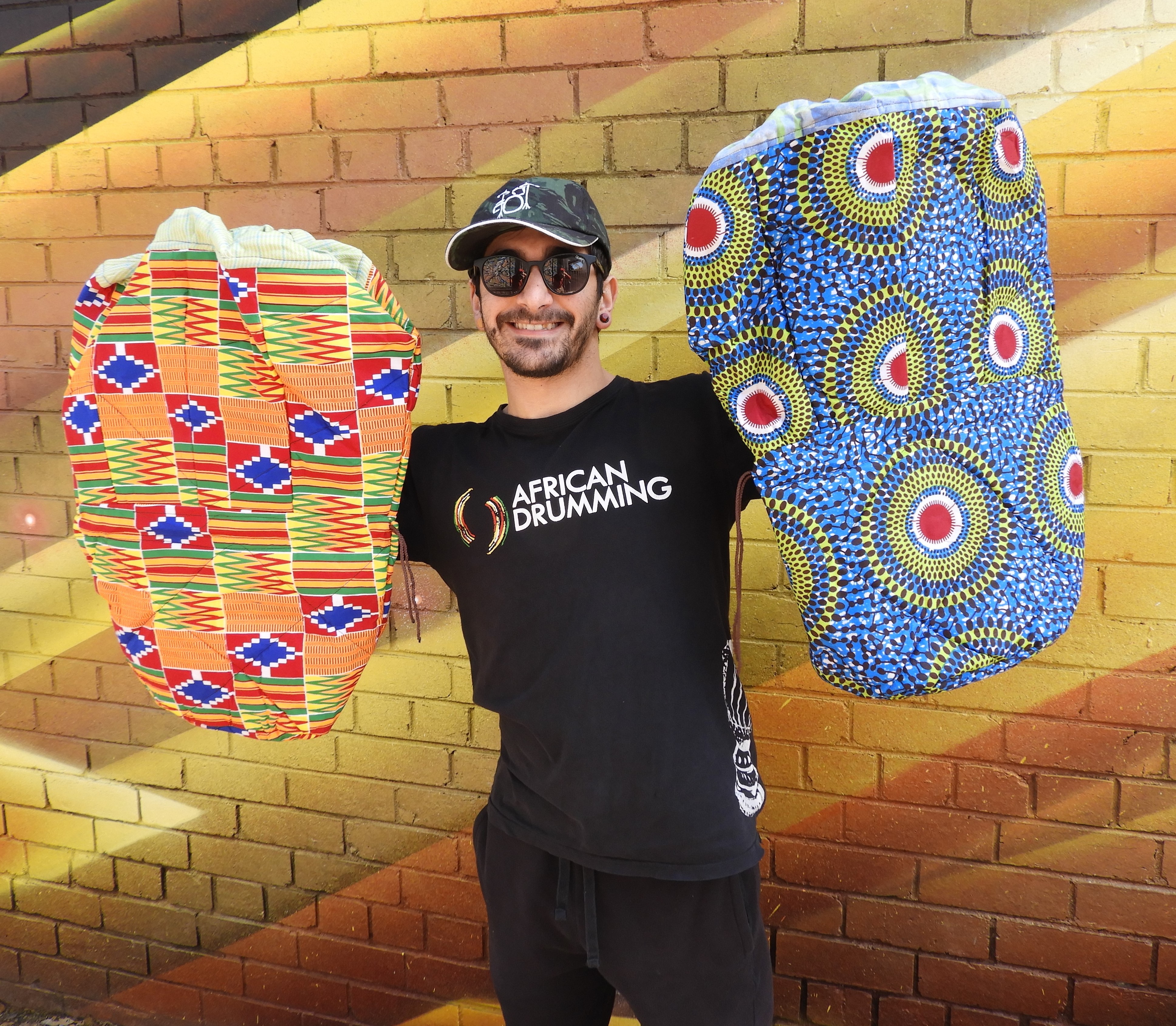
Spring is here and we’ve got a new collection of djembe cloth bags from Ghana to mark the season! Available in a wide variety of colours, these cloth bags are the perfect home for your djembe.
Featuring reinforced sewn straps, a padded lid and a draw-string closure.
Handmade in Ghana, West Africa.
Shop now
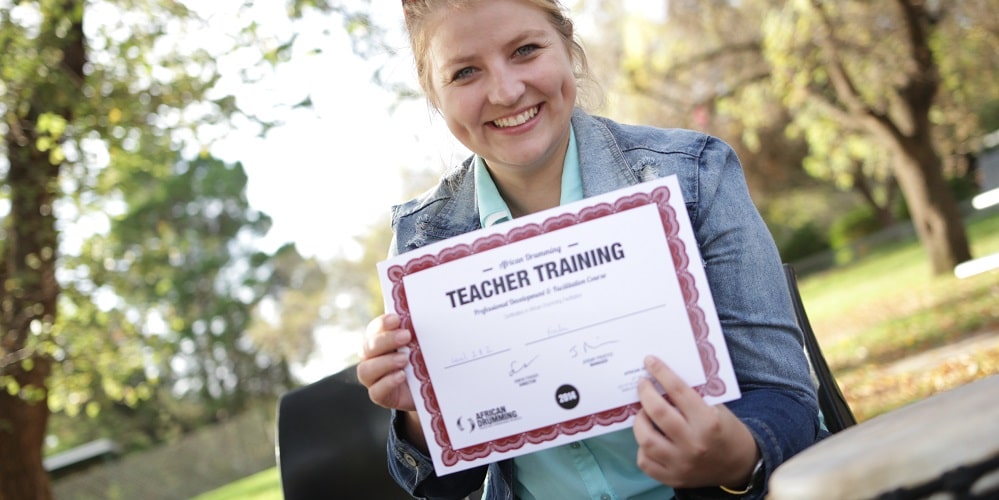
Our online Teacher Training courses will enable you with the tools, skills and resources to run your own African Drumming classes.
No prior musical experience necessary and courses are available via Zoom and are aligned with the Australian Government Schools Curriculum.
Level 1
Saturday 12th September 2020 9.30am – 3.30pm (AEST)
Level 2
Sunday 13th September 2020 9.30am – 3.30pm (AEST)
Level 3
Saturday 14th & Sunday 15th November 2020 9.30am – 3.30pm (AEST)
Register today 😀
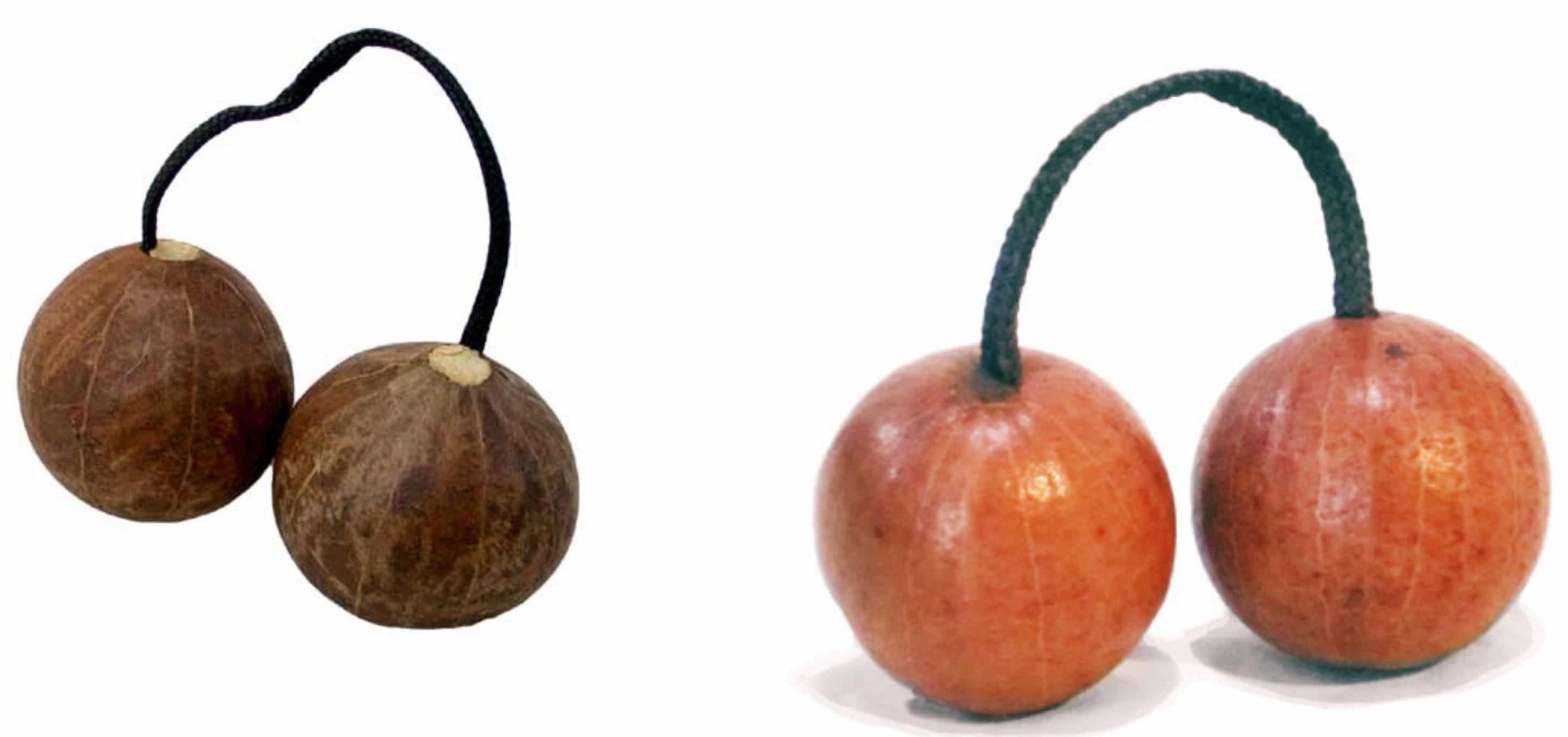
Originating from Ghana and pronounced “us-la-twa,” the aslatua is played by holding and shaking one gourd in the palm while swinging the second gourd around. The simple and traditional percussive instruments are usually played in pairs (one in each hand) and are capable of producing complex polyrhythms.
We have two types of aslatua here at African Drumming
1. The master series, which is our premium aslatua. Filled with seeds and handmade with a thicker string for the traditional, rich and sandy sound.
2. The standard, which are filled with pebbles for a crisp, percussive sound.
View our aslatua range here

Our handpans, which are inspired by the traditional hang drum, are some of our most popular and prized instruments here at African Drumming. Played by hand, rather than sticks or mallets, the handpan drum has a rich, intimate sound, full of emotion and depth. There is no specific technique or style in the art of playing a handpan and a player with patience and an open mind will be rewarded with deep layers of complexity to explore. We have a range of handpans for sale in both the master and primo series range, available in different keys and prices. Also, if you’re looking for a complimentary instrument for yoga, pilates or a sound bath, the handpan is the perfect instrument for you as they are incredibly mediative and have proven calming effects.
View our handpan range here
Goats aren’t goats I hear you say!
Ever had a drum or skin that carries its own particular odour (Eau de chevre)?
Some goat and cow skins can have a little more odour than others. Thicker, male goat skins especially tend to carry more pheromones which trap odour in the hair follicles. This smell can stay around even when the hair is taken off the goat.
The good news is there is a way to prevent this “eau de chevre” making its way onto your drum, but you really need to get onto it early, before the skin is mounted.
The best way to remove any odour is to wash the skins well before mounting them on your drum.
Adding some baking soda (sodium bicarbonate) or mild bleach to the water when you soak the skin is a great start. Then scrub the skin with laundry (or even dish-washing) detergent once is has soaked.
You’ll find this should bring your goat back to smelling fresh and ready to mount on your drum.
If you have a drum that has a slightly tangy smell to it, we recommend a healthy dose of hot sun and a couple of drops of essential oil (peppermint or eucalyptus) rubbed onto a rag and then the surface of the drum
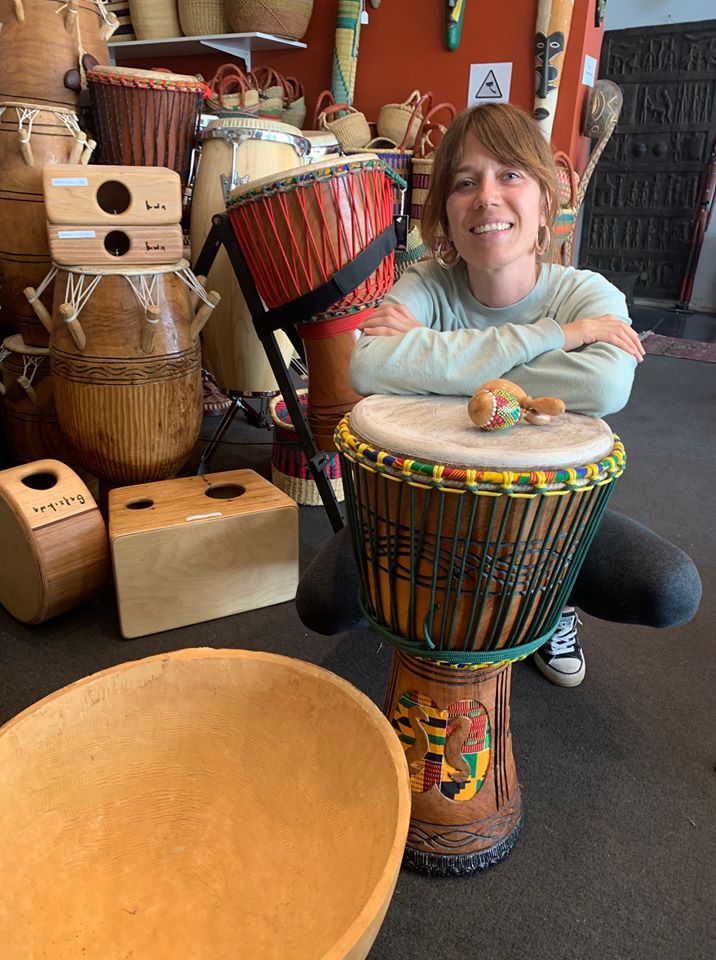
Meet Yolanda. She’s a singer, songwriter who’s looking for more bass in her band, and so we hooked her up with a beautiful booming djembe from Ghana. She also picked up a huge XXXL calabash which will go down beautifully at her Kirtan events.
Check out her page here and get along to support more awesome local Melbourne artists.
View our Ghana djembe range here
View our Calabash here
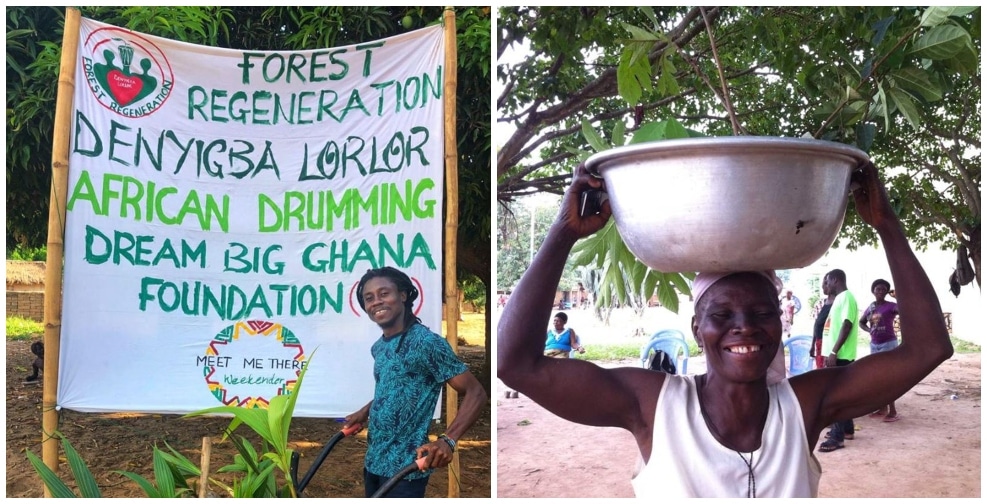
Did you know that every drum purchase made at African Drumming goes towards the growth of a new sapling in Ghana, West Africa? That’s right! Every time you buy an African drum from us your purchase will help foster our forest regeneration project with our partners Denyigba Lorlor. Our friends have been busy these past few months nurturing mahogany trees to maturity and embarking on a new Coconut tree project. We’re so over the moon to hear that our project in Ghana is going so well!
Denyigba Lorlor also works with Dream Big Ghana, a similar minded NGO focused on improving sanitation and education in Ghana.
???

First time drummer Corrina came into the store last week and bought a djembe, a set of bongos AND a darbuka! Thanks so much for coming in Corrina, you’re in for a treat with all those instruments! ?
Shop our online store now.
Our school and kinder workshops are an immersive, educational experience for students of all ages and backgrounds. We bring the rich culture of West Africa to each and every classroom through drumming, dancing and singing. Check out our new video below for more information.
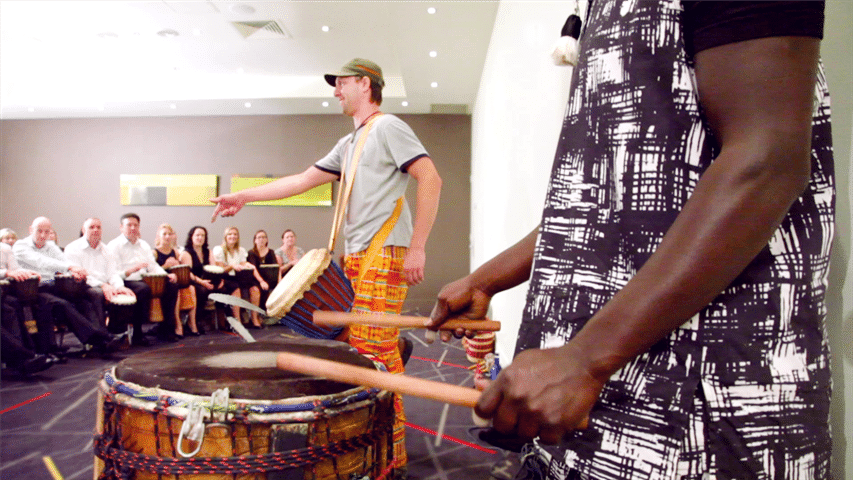
Mindfulness is a mental state in which you’re totally focused on the present moment. It offers a clarity and sharpness of thought that provides, at the very least, a temporary reduction in stress. This mental exercise enables you to achieve a greater emotional balance. What’s more, experts have found that mindfulness can even reduce physical pain and mental depression. For the middle aged or elderly, mindfulness activities can help to keep the brain sharper for longer. There are many ways of achieving mindfulness. You might get there through practiced breathing techniques, yoga, relaxation practices or meditation, among other methods. But did you know that musical rhythm is another effective way to tap into mindfulness?
TRM And It’s Benefits
Therapeutic Rhythm and Mindfulness, also known as TRM, represents ways of getting to a state of mindfulness through group drumming or other forms of rhythmic musical expression. The goal of TRM is to sharpen your consciousness and strengthen your sense of social connection by incorporating drumming skills into a group dynamic. It’s not easy. It requires concentration, focus and an awareness of others – all of which are fundamental capabilities for strong mental health. Not only do you stand to gain these valuable benefits, but group drumming is fun!
Discover Your Place In The Present
The concept of TRM involves fully cultivating your awareness of the present moment. With your focus completely within the now, you begin to realize that the present moment is the only place where reality unfolds. This helps you avoid dwelling in thoughts about the past or future that don’t serve a purpose. Living in the present moment may relieve you of dark memories that you could have collected as unwanted baggage, or of the tension of
tomorrow’s expectations upon you. As long as you’re sharing in the rhythm, your mind will stay in the here and now. It’s a challenge, finding and maintaining this group rhythm. While you’re facing this challenge, there’s no time for stress or anxiety. You lose all concern about a fight with someone or the bills due tomorrow. There’s only your sharp focus on the rhythm to maintain. Your only responsibility is to add
to the collective sound of those within your new and present social network.
The Cognitive Benefits Of Drumming
Repetitive drumming puts us in a relaxed state of mind in much the same way that meditation or breathing exercises provide focus and stress relief. In all cases, we have no time for alternate situations as we concentrate on what we’re doing in the moment. The way that group drumming allows you to express yourself creatively is just as beneficial to your brain as if you’d taken up the violin, oil painting or poetry writing.
Creative expression, social acceptance and connectivity can be the result of group drumming. TRM has scientific support. The exercise sends messages through the neural pathways of the brain that can be adversely affected by negative emotions such as fear, stress and anxiety. And, as in all mindfulness exercises, it can slow the thinning of the frontal cortex of the brain that occurs with age and results in forgetfulness.
The Social Side Of Group Drumming
The social aspect of drumming within a group environment sharpens acuity and is as beneficial as a shared activity as meeting others regularly in a book group, chatting every morning over coffee or playing horseshoe once a week. Studies have shown that social interaction provides as much protection against dementia and Alzheimer’s disease as a good diet, regular exercise and mental workouts. Drumming
and other forms of musical expression are mental workouts in their own right.
Drumming also taps into the innate human need to play. It’s easy to underestimate the importance of play in life. Whether you’re nine or ninety, you need to experience the joy, humor and sense of shared experience that play brings us. Music-making delivers that state of playfulness in spades. Creative expression in a group context can bring you out of the wilderness if you’re experiencing loneliness, depression, anxiety, grief or social awkwardness. TRM through group drumming can help you claim a space in your life where you feel you truly belong – and benefit your brain and physical well-being in the process.
Further reading ?
Effects of Community African Drumming on Generalised Anxiety in Adolescents
By David Akombo
African drumming as a medium to promote emotional and social well-being of children aged 7 to 12 in residential care
By Kim Flores
The Impact of Group Drumming on Social-Emotional Behavior in Low-Income Children
By Ho et al
When the quiet child takes charge: Inclusivity and Confidence through African Drumming
The lost art of attention: Finding focus through African Drumming
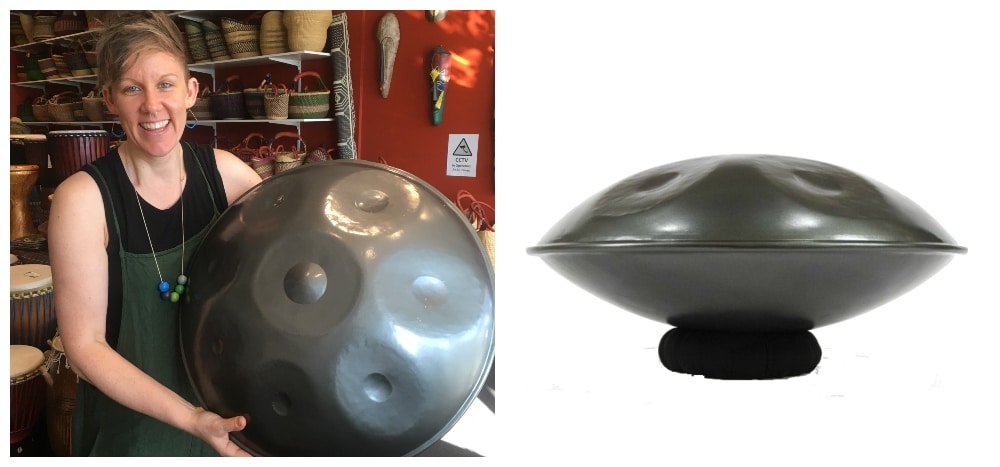
Aleisha Leonard came in last week and picked up a beautiful gudu handpan. Aleisha teaches yoga and was looking for the perfect accompaniment to her sessions. The handpan is a new and mysterious instrument, distantly related in principle to the steelpan of Trinidad and Tobago, but inspired in sound by the Hang of Switzerland. Played by hand, the handpan has a rich, intimate sound and is full of emotion. There is no specific technique or style in the art of playing and a player with patience and an open mind will be rewarded over time with this complex and beautiful instrument.
Our selection of handpans can be viewed here.

So much has been said about the many ways in which new technologies steal our attention, changing our ability to focus on doing one thing at a time, or our ability to do nothing at all. We play with our phones while watching television and we look at our screens whenever we finally have a quiet moment. Many adults struggle with gaining their attention back. Some embark on a ‘digital diet’ or swear off screens at certain times of the day. If adults who grew up during quieter times find it hard to disconnect, how can we teach children, born into a world of constant
distractions, to focus on the moment and be able to give attention to just one thing for more than a few minutes?
These are increasingly important skills to have, in every area of life. Children naturally have shorter attention spans than adults, however growing up in an environment that constantly offers distractions can have a major impact on their ability to focus, as well as their ability to develop attention skills as adults. It’s also important for children to be able to get bored, as it develops their understanding of what they really enjoy doing. In addition, it opens a space for creativity to flourish and it allows for time to reflect, calm down, or process feelings and events.
So how can we develop children’s focus in a world of constant distractions? One way to do it which has been widely researched and discussed, is mindfulness: the act of purposefully giving attention.
Mindfulness is gaining huge popularity among parents and educators alike, and has been integrated across kindergartens and schools. Another great tool is to offer activities that are fully engaging, so that children focus on them without even trying; instead they just find themselves enjoying and being in the moment. Even better is combining the two: finding activities that offer both total immersion and engagement together with elements of mindfulness. These types of activities can be incredibly powerful for children. Often, these activities will include repetitive or rhythmic elements; they will offer the child the opportunity to be a part of a team, while still allowing for self-expression and creativity; and will provide constant learning and growth without being too challenging. Some of the best options for these types of activities are dance or music-based workshops, especially accessible and inclusive ones. For example, African drumming is an incredibly accessible form of music playing – within a minute of being introduced to the hand drum, anyone can follow a rhythm. It isn’t challenging at all to begin to play, however it offers a constant learning curve that keeps the child engaged. The repetition within the rhythm is a powerful tool for encouraging mindfulness, offering the same focus that is given to the breath in meditation practices. African drumming is best played in a group, demanding that attention is given to the rest of the players and to the rhythms played together; at the same time, students can also find space for self-expression and creativity and be given opportunities to solo or improvise. This also means that children will need to listen, follow and respond to the improvisation of other children. This is an important element as it demands that the child does not lose themselves in their own experience, but instead stay attuned to the group.
Drumming on djembes – the African hand drums – is a physical activity which provides a variety of tools for expanding the mindfulness experience. For example, students can focus on the movement of their hands, or they can practice breathing through vigorous drumming. The physical element of drumming also helps in diminishing signs of restlessness and relieving anxiety or stress, just as other forms of physical workouts offer. The stress relieving also helps in regaining focus and staying in the moment. The accessible and engaging qualities, together with the mindfulness elements of African drumming, demonstrate that attention can be gained and practiced in meaningful experiences, away from the screens and for substantial periods of times. Nowadays, when attention is an art that needs constant practicing and reinforcing, it is an incredibly valuable instrument.


